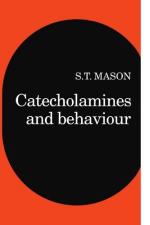|
This section contains 123 words (approx. 1 page at 300 words per page) |
The catecholamines are a series of structurally similar amines (e.g., DOPAMINE, epinephrine, NOREPINEPHRINE that function as hormones, as NEUROTRANSMITTERS, or both. Catecholamines are produced by the enzymatic conversion of tyrosine, sharing the chemical root of 3, 4-dihydroxyphenylethanolamine. The three major catecholamines (mentioned above) derive from sequential enzymatic reactions-tyrosine is converted to dihydroxyphenylacetic acid (dopa); dopa, which is not an end product but a common intermediate (and the medication of choice for Parkinson's disease), is converted to dopamine; dopa-mine is converted to noradrenaline (also called norepinephrine); and noradrenaline is converted to adrenaline (also called epinephrine). These substances are the neurotransmitters for the sympathetic neurons (nerve cells) of the autonomic nervous system, as well as for three separate broad sets of brain neuropathways.
|
This section contains 123 words (approx. 1 page at 300 words per page) |


